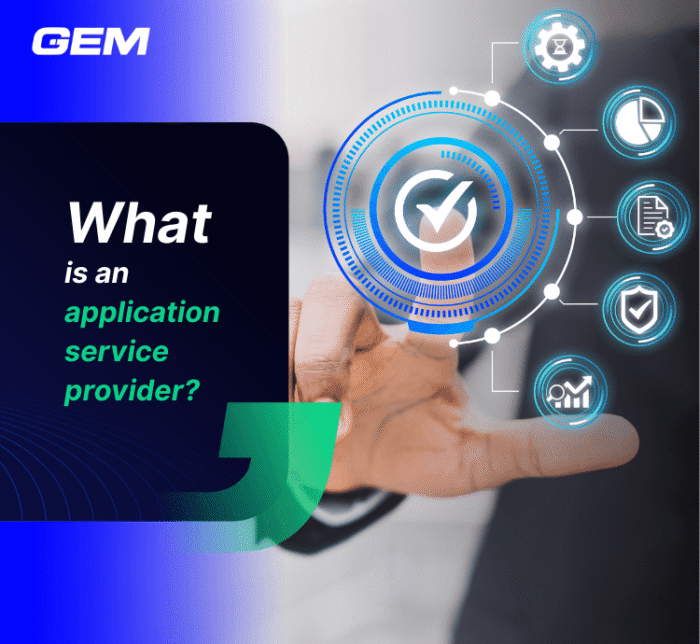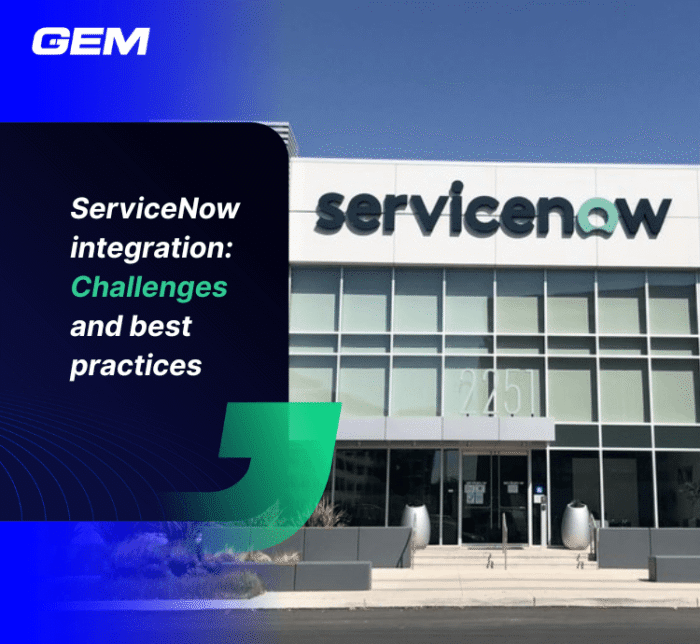Contents
- Understanding cloud migration services
- 4 key benefits of cloud migration services
- Facilitating the adoption of advanced analytics and AI
- How to get started
- Closing remark
- Let’s see how GEM can help with your cloud journey!
Cloud migration is one of the key strategies businesses can use to realize digital success. However, the process of moving to the cloud can be complex and challenging. This is where cloud migration services come into play.
Cloud migration services provide the expertise and support needed to ensure a smooth and successful transition to the cloud.
In this article, we will explore the benefits of cloud migration services and showcase how our expertise can help your business navigate this critical transformation with confidence and ease.

Understanding cloud migration services
Cloud migration services are specialized offerings provided by IT professionals and service providers to help businesses move their data, applications, and operations to the cloud. These services encompass a wide range of activities designed to ensure a smooth, secure, and efficient transition to the cloud.
The main cloud migration services are as follows.
Assessment and planning
Before any migration begins, you can employ cloud migration consulting services from a trusted IT partner. Experts conduct a thorough assessment of your current IT infrastructure including:
- Evaluating which applications and data are suitable for the cloud
- Identifying potential challenges
- Creating a detailed migration plan tailored to your business needs.
Migration execution
Once the plan is in place, the service provider manages the entire migration process. This involves transferring data and applications from on-premise systems or another cloud environment to the target cloud platform. The goal is to minimize downtime and disruptions to your business operations.
Optimization and support
After the migration, cloud migration services often include ongoing support to ensure everything runs smoothly. This might involve optimizing cloud resources for better performance and cost-efficiency, training your team, and offering troubleshooting and technical support.
These services provide the expertise and tools necessary to navigate the complexities of cloud migration, allowing your business to focus on its core operations while seamlessly transitioning to a more modern and scalable environment.
4 key benefits of cloud migration services
Cloud migration services help businesses unlock 4 strategic advantages that help them thrive in an ever-changing landscape.
Facilitating global expansion and efficient resource usage
With cloud migration services, companies can seamlessly scale their operations globally while centralizing management across all locations. The cloud allows businesses to quickly adjust capacity based on demand, deploy applications worldwide, and maintain consistent performance across markets. This centralized approach not only improves operational efficiency but also enables a more agile and responsive strategy in meeting global market demands.
Strengthening business continuity and resilience
The cloud provides a robust platform for maintaining business continuity during unexpected disruptions such as cyber threats and natural disasters through several key mechanisms.
Distributed architecture
Resources are spread across multiple global data centers, so if one fails, others maintain service.
Automatic failover
Systems automatically switch to backup if a primary system fails, preventing interruptions.
Real-time monitoring
Continuous monitoring detects issues early, triggering automated responses to prevent downtime.
Disaster recovery as a service (DRaaS)
Cloud providers offer backup and recovery services, allowing businesses to quickly restore operations after a disruption.
These mechanisms ensure operations remain uninterrupted, minimize downtime, protect critical data, and thus maintain customer trust during challenging times.

Enabling faster product development and time-to-market
The cloud accelerates product development and reduces time-to-market by unlocking several critical capabilities.
On-demand scalability
The cloud offers scalable computing resources that can be adjusted instantly based on project needs. This allows businesses to handle large workloads during peak development phases without delays, ensuring that projects stay on schedule.
Automated testing environments
Cloud platforms provide automated testing environments where developers can run multiple tests simultaneously. This speeds up the identification and resolution of issues, enabling faster iterations and refinement of products.
Global collaboration tools
The cloud supports real-time collaboration across geographically dispersed teams. Developers, designers, and stakeholders can work together seamlessly, accelerating decision-making and reducing bottlenecks.
Access to advanced technologies
The cloud democratizes access to cutting-edge tools like AI, machine learning, and big data analytics. Businesses can integrate these technologies into their products without significant capital investments, allowing them to innovate quickly and effectively.
Flexible deployment options
The cloud enables businesses to deploy applications globally with just a few clicks. This flexibility allows companies to enter new markets rapidly and adjust to changing market demands.

Facilitating the adoption of advanced analytics and AI
Cloud migration helps businesses get ready to harness the power of big data and AI by providing:
Scalable data storage and processing
The cloud offers almost unlimited storage capacity and powerful processing capabilities, allowing businesses to collect and analyze vast amounts of data without worrying about infrastructure limitations. This scalability ensures that as data grows, the systems can handle it well to enable continuous access to valuable insights.
Integrated analytics platforms
Cloud platforms provide integrated analytics tools that allow businesses to process data in real time. These tools can aggregate data from multiple sources, making it easier to identify patterns and trends in customer behavior, market dynamics, and operational performance. The result is more precise and strategic decision-making.
AI-ready infrastructure.
The cloud offers the necessary infrastructure to deploy and scale AI applications efficiently. By leveraging cloud resources, businesses can run complex AI models and machine learning algorithms that require significant computational power. This capability accelerates the development and deployment of AI solutions across various business functions.
Unified data ecosystem
The cloud breaks down data silos by centralizing data storage and access. This unified approach allows businesses to combine data from different sources. AI models benefit from this integrated data because it enables more reliable predictions and analyses.
Real-time data flow
The cloud supports continuous real-time data flow, allowing AI models to receive and process data as it’s generated. This dynamic environment enables AI models to learn and adapt quickly, improving their accuracy and relevance gradually.
Democratization of AI tools
Cloud platforms make advanced AI tools accessible to businesses of all sizes by reducing the need for expensive hardware and specialized expertise. This democratization allows smaller firms to compete with larger players.

How to get started
When utilizing cloud migration services, preparation is key to achieving your goals. This guide outlines the essential steps to help you navigate the process.
Defining business goals and objectives
The first step in cloud migration is to define your objectives and goals. Start by assessing your business needs, whether it’s improving operational efficiency, enhancing scalability, or leveraging AI and advanced analytics. Having a well-defined objective will guide the entire migration process. Additionally, it’s important to evaluate your existing IT infrastructure. It helps you understand which applications, data, and processes are best suited for the cloud and identifies any potential challenges or constraints.
Choosing your cloud migration strategy
Once your objectives are clear, the next step is to choose the right one from many cloud migration strategies. There are several options, each with its advantages depending on your business requirements and the complexity of your current systems.
Rehosting
Also known as “lift and shift,” this strategy involves moving your existing applications and data to the cloud with minimal changes. It’s a quick and straightforward approach, ideal for companies looking to migrate quickly without altering their existing systems.
Replatforming
This strategy, often referred to as “lift, tinker, and shift,” involves making some optimizations to your applications during migration, such as upgrading to a newer operating system or database. Replatforming allows for improved performance without significant changes to the core architecture.
Relocate (Hypervisor-level lift and shift)
This strategy involves moving the entire infrastructure to the cloud without requiring new hardware, application rewrites, or changes to current operations. It’s ideal for organizations that need to maintain their existing setups but want to benefit from cloud infrastructure.
Refactoring
Also known as “re-architecting,” refactoring involves redesigning your applications to fully leverage cloud-native features and services. This strategy requires more time and resources but offers the greatest long-term benefits, such as improved scalability, flexibility, and cost-efficiency.
Consulting with cloud migration experts can be invaluable at this stage. These experts can provide insights on the most effective approach, ensuring that your migration strategy is aligned with your business goals.
Repurchase (Drop and shop)
This strategy entails switching to a different product, often by adopting a Software as a Service (SaaS) model instead of traditional licensing. It’s particularly beneficial for businesses that want to reduce the overhead of maintaining legacy systems and prefer the ease and flexibility of SaaS solutions.
Retain (Revisit)
Retaining involves keeping applications in their current environment. This applies to applications that require significant refactoring, which may be postponed, or legacy applications that don’t justify the cost of migration. This strategy is useful for businesses that need more time to plan their migration or have certain applications that must remain on-premises.
Retire
Retiring means discontinuing or removing applications that are no longer needed. This strategy is often used by organizations looking to streamline their IT portfolios by eliminating outdated or redundant systems.
Select a trusted cloud migration service provider
After selecting the appropriate strategy, the next step is to choose a trusted cloud migration service provider.
It’s important to research top providers in Asia or your region, particularly those with a proven track record, industry expertise, and a deep understanding of your business sector.
In addition, a provider that offers comprehensive services, including assessment, migration execution, and ongoing support can ensure a seamless transition and continuous optimization post-migration.
Plan and execute the migration
With a provider selected, you can move on to planning and executing the migration. It’s crucial to develop a detailed migration plan with timelines, milestones, and a risk management strategy with your service provider to minimize disruptions.
A phased approach to migration is often beneficial because you can start with less critical workloads to test the process before moving on to more essential systems. This method helps manage risks and allows for adjustments as needed.

Optimize and monitor post-migration
After the migration, it becomes essential to continuously optimize your cloud environment to ensure it meets performance and cost-efficiency targets. This process may involve adjusting resource allocations, scaling services, or refining processes based on real-time data.
Additionally, ongoing support from your service provider plays a key role, offering services such as team training, troubleshooting issues, and staying updated with the latest cloud innovations to maximize the value of your migration.
Review and reflect
After the migration is complete, it’s essential to review the outcomes against your initial objectives to evaluate whether the migration has met your business goals and to identify areas for improvement. Since cloud migration is not a one-time event but an ongoing journey, regularly revisiting and refining your cloud strategy is necessary to adapt to new challenges, emerging technologies, and evolving business needs.
Closing remark
Cloud migration has become more and more important for businesses in the modern age thanks to the strategic advantages that they unlock.
GEM is trusted by over 100 global clients as a savvy provider of cloud migration services with world-class delivery processes and 300+ IT experts. Our holistic, customer-first approach ensures that each migration is tailored to meet the unique needs of your business, maximizing efficiency and minimizing disruption.






